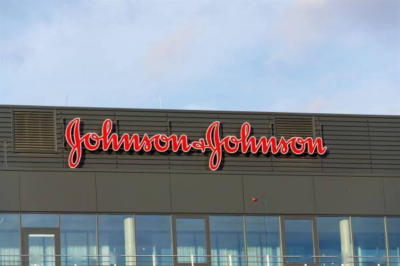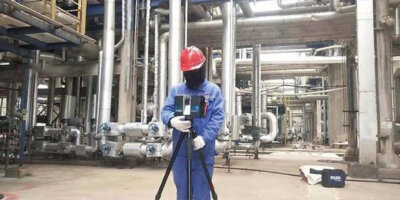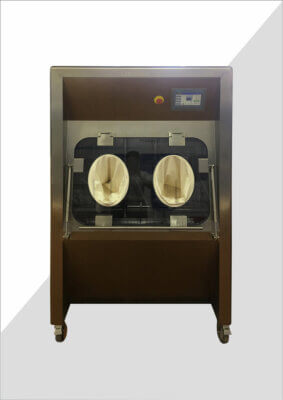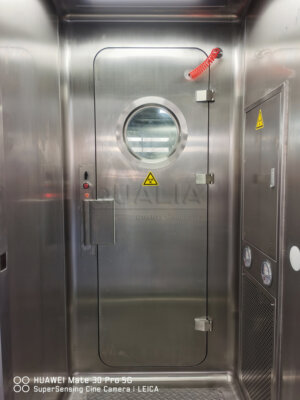The pharmaceutical industry, while crucial for human health and well-being, has long grappled with the environmental challenges posed by its effluents. As public awareness and regulatory pressures mount, the sector is witnessing a paradigm shift in wastewater management. Emerging technologies are paving the way for more efficient, sustainable, and eco-friendly treatment solutions, promising to mitigate the environmental impact of pharmaceutical manufacturing processes.
In recent years, the landscape of pharmaceutical effluent treatment has been transformed by a wave of innovative technologies. From advanced oxidation processes to membrane bioreactors, these cutting-edge solutions are addressing the complex nature of pharmaceutical wastewater with unprecedented efficiency. This article delves into the most promising emerging technologies, exploring their mechanisms, benefits, and potential to revolutionize the industry's approach to wastewater management.
As we transition into an era of heightened environmental consciousness, the pharmaceutical sector stands at a critical juncture. The adoption of these emerging technologies not only ensures compliance with increasingly stringent regulations but also aligns with the industry's growing commitment to sustainability. By embracing these innovations, pharmaceutical companies can significantly reduce their environmental footprint while potentially uncovering new avenues for resource recovery and cost savings.
"The integration of emerging technologies in pharmaceutical effluent treatment is not just a regulatory necessity, but a strategic imperative for sustainable growth in the industry."
| Technology | Key Benefits | Environmental Impact | Implementation Challenges |
|---|---|---|---|
| Advanced Oxidation Processes | High removal efficiency of recalcitrant compounds | Reduced toxic pollutants in water bodies | High energy consumption |
| Membrane Bioreactors | Excellent effluent quality, smaller footprint | Lower sludge production | Membrane fouling, high initial costs |
| Nanotechnology-based Treatment | Targeted removal of specific contaminants | Potential for micropollutant elimination | Potential nanoparticle toxicity concerns |
| Phytoremediation | Low-cost, eco-friendly | Natural habitat restoration | Long treatment times, seasonal variations |
| Electrochemical Advanced Oxidation | Effective degradation of persistent pollutants | Minimal chemical addition | High electricity costs |
How are Advanced Oxidation Processes revolutionizing pharmaceutical wastewater treatment?
Advanced Oxidation Processes (AOPs) have emerged as a game-changer in the treatment of pharmaceutical effluents. These processes involve the generation of highly reactive hydroxyl radicals that can break down even the most recalcitrant organic compounds found in pharmaceutical wastewater.
AOPs offer a powerful solution for degrading complex pharmaceutical molecules that conventional biological treatments often fail to address. They can effectively remove a wide range of contaminants, including antibiotics, hormones, and other active pharmaceutical ingredients (APIs) that pose significant environmental risks.
The versatility of AOPs allows for their application in various stages of the treatment process, either as a standalone solution or in combination with other treatment methods. This flexibility makes them particularly attractive for pharmaceutical companies dealing with diverse and variable wastewater compositions.
"Advanced Oxidation Processes have demonstrated up to 99% removal efficiency for certain pharmaceutical compounds, setting a new standard in effluent treatment effectiveness."
| AOP Type | Oxidizing Agent | Target Contaminants | Removal Efficiency |
|---|---|---|---|
| UV/H2O2 | Hydroxyl radicals | APIs, endocrine disruptors | 80-99% |
| Ozonation | Ozone | Antibiotics, personal care products | 70-95% |
| Fenton Process | Hydroxyl radicals | Recalcitrant organics | 85-99% |
Can Membrane Bioreactors offer a compact solution for pharmaceutical effluent treatment?
Membrane Bioreactors (MBRs) represent a significant leap forward in wastewater treatment technology, offering a compact and efficient solution for pharmaceutical effluents. By combining biological treatment with membrane filtration, MBRs provide superior effluent quality in a smaller footprint compared to conventional activated sludge systems.
The integration of membrane technology with biological processes allows for higher biomass concentrations, resulting in more effective degradation of pharmaceutical compounds. This synergy not only improves treatment efficiency but also reduces the volume of excess sludge produced, addressing a significant challenge in wastewater management.
MBRs are particularly well-suited for pharmaceutical applications due to their ability to retain slow-growing microorganisms that are essential for breaking down complex pharmaceutical molecules. The high-quality effluent produced by MBRs also opens up possibilities for water reuse within pharmaceutical facilities, contributing to water conservation efforts.
"Membrane Bioreactors have been shown to achieve removal rates of over 95% for a wide range of pharmaceutical compounds, while occupying up to 50% less space than conventional treatment systems."
| MBR Component | Function | Benefit |
|---|---|---|
| Biological Reactor | Biodegradation of contaminants | Efficient removal of organic pollutants |
| Membrane Module | Solid-liquid separation | High-quality effluent suitable for reuse |
| Aeration System | Oxygen supply and membrane scouring | Enhanced biological activity and reduced fouling |
How is nanotechnology transforming the landscape of pharmaceutical effluent treatment?
Nanotechnology is rapidly emerging as a powerful tool in the arsenal of pharmaceutical effluent treatment technologies. The unique properties of nanomaterials, such as their high surface area-to-volume ratio and tunable surface chemistry, make them exceptionally effective in targeting and removing specific contaminants from wastewater.
Nanomaterials, including nanoparticles, nanotubes, and nanomembranes, are being employed in various treatment processes. For instance, nano-adsorbents can selectively remove pharmaceutical compounds from water, while nanophotocatalysts can break down complex molecules when exposed to light. These nano-enabled technologies offer unprecedented precision in contaminant removal.
The application of nanotechnology in pharmaceutical effluent treatment extends beyond mere filtration. Researchers are developing smart nanomaterials that can detect and respond to specific pollutants, potentially revolutionizing real-time monitoring and treatment of pharmaceutical wastewater.
"Nanotechnology-based treatment methods have demonstrated the ability to remove up to 99.9% of certain pharmaceutical micropollutants, even at trace concentrations, surpassing the capabilities of conventional treatment technologies."
| Nanomaterial Type | Application | Target Contaminants | Removal Efficiency |
|---|---|---|---|
| Carbon Nanotubes | Adsorption | APIs, hormones | 90-99% |
| TiO2 Nanoparticles | Photocatalysis | Antibiotics, analgesics | 85-99.9% |
| Nano-Zero Valent Iron | Reduction | Halogenated compounds | 95-99% |
Can phytoremediation provide a sustainable approach to pharmaceutical wastewater treatment?
Phytoremediation, the use of living plants to clean up contaminated environments, is gaining traction as a sustainable and eco-friendly approach to pharmaceutical effluent treatment. This green technology harnesses the natural ability of certain plants to absorb, accumulate, and/or degrade various pharmaceutical compounds present in wastewater.
The beauty of phytoremediation lies in its simplicity and low environmental impact. By creating constructed wetlands or floating treatment wetlands, pharmaceutical companies can establish natural, self-sustaining systems that continuously treat wastewater. These systems not only remove contaminants but also provide additional ecosystem services such as carbon sequestration and habitat creation.
While phytoremediation may require longer treatment times compared to more intensive technologies, it offers significant advantages in terms of cost-effectiveness and environmental sustainability. Moreover, the biomass produced through this process can potentially be used for energy production or as a source of valuable compounds.
"Studies have shown that certain plant species can remove up to 90% of specific pharmaceutical compounds from wastewater, while simultaneously improving biodiversity and creating aesthetic green spaces."
| Plant Species | Target Contaminants | Removal Mechanism | Efficiency |
|---|---|---|---|
| Typha latifolia | NSAIDs, antibiotics | Rhizofiltration | 70-90% |
| Phragmites australis | Hormones, antidepressants | Phytodegradation | 60-85% |
| Lemna minor | Analgesics, antiepileptics | Phytoaccumulation | 75-95% |
How are Electrochemical Advanced Oxidation Processes pushing the boundaries of effluent treatment?
Electrochemical Advanced Oxidation Processes (EAOPs) represent a cutting-edge approach to pharmaceutical effluent treatment, combining the power of electrochemistry with advanced oxidation techniques. These processes generate highly reactive species directly from water molecules, eliminating the need for chemical additives and offering a clean, efficient method for degrading recalcitrant pharmaceutical compounds.
EAOPs work by applying an electric current to electrodes immersed in the wastewater, producing powerful oxidants such as hydroxyl radicals, hydrogen peroxide, and ozone. These oxidants can break down complex pharmaceutical molecules into simpler, less harmful compounds or even fully mineralize them to carbon dioxide and water.
One of the key advantages of EAOPs is their versatility and controllability. By adjusting parameters such as current density, electrode material, and electrolyte composition, these systems can be fine-tuned to target specific contaminants or adapt to varying wastewater compositions, making them ideal for the dynamic nature of pharmaceutical effluents.
"Electrochemical Advanced Oxidation Processes have achieved removal efficiencies of up to 99.9% for certain pharmaceutical pollutants, while significantly reducing treatment times compared to conventional oxidation methods."
| EAOP Type | Oxidant Generated | Target Contaminants | Energy Efficiency |
|---|---|---|---|
| Anodic Oxidation | Hydroxyl radicals | APIs, endocrine disruptors | High |
| Electro-Fenton | Hydrogen peroxide, hydroxyl radicals | Antibiotics, NSAIDs | Medium-High |
| Electro-peroxone | Ozone, hydrogen peroxide | Recalcitrant pharmaceuticals | Very High |
Is the future of pharmaceutical effluent treatment in hybrid systems?
The complexity and variability of pharmaceutical effluents often necessitate a multi-faceted approach to treatment. Hybrid systems, which combine two or more treatment technologies, are emerging as a promising solution to address the diverse challenges posed by pharmaceutical wastewater.
Hybrid systems leverage the strengths of different technologies while mitigating their individual limitations. For instance, combining membrane bioreactors with advanced oxidation processes can provide both biological treatment for biodegradable compounds and chemical oxidation for recalcitrant pollutants. This synergistic approach often results in superior treatment efficiency and more consistent effluent quality.
The flexibility of hybrid systems allows pharmaceutical companies to tailor their treatment processes to specific waste streams or regulatory requirements. Moreover, these integrated solutions can often achieve treatment goals more cost-effectively than single-technology approaches, balancing performance with economic considerations.
"Hybrid treatment systems have demonstrated the ability to achieve overall contaminant removal rates exceeding 99% for complex pharmaceutical effluents, while also improving operational reliability and flexibility."
| Hybrid Combination | Primary Function | Secondary Function | Overall Efficiency |
|---|---|---|---|
| MBR + AOP | Biological treatment | Oxidation of recalcitrants | 95-99.5% |
| Anaerobic + Aerobic | Organic removal | Nutrient removal | 90-98% |
| Electrocoagulation + Phytoremediation | Rapid contaminant removal | Polishing and eco-enhancement | 85-97% |
How can 'QUALIA''s innovative solutions contribute to advancing pharmaceutical effluent treatment?
In the rapidly evolving landscape of pharmaceutical effluent treatment, 'QUALIA' has emerged as a pioneering force, offering cutting-edge solutions that address the industry's most pressing challenges. Their innovative approach combines state-of-the-art technology with a deep understanding of pharmaceutical wastewater complexities.
'QUALIA''s commitment to advancing effluent treatment is exemplified by their 'Effluent Decontamination System (EDS)', specifically designed for handling liquid waste from BSL-2, BSL-3, and BSL-4 facilities. This system represents a significant leap forward in the treatment of high-risk pharmaceutical and biohazardous effluents.
By integrating multiple treatment technologies, 'QUALIA''s solutions offer unparalleled efficiency in removing a wide spectrum of pharmaceutical contaminants. Their systems not only ensure compliance with the most stringent regulatory standards but also pave the way for more sustainable pharmaceutical manufacturing practices.
"'QUALIA''s Effluent Decontamination System has demonstrated the ability to achieve complete inactivation of biohazardous materials while removing over 99% of pharmaceutical contaminants, setting a new industry benchmark for effluent treatment effectiveness and safety."
| Feature | Benefit | Impact |
|---|---|---|
| Multi-stage Treatment | Comprehensive contaminant removal | Enhanced environmental protection |
| Automated Operation | Reduced human intervention | Improved safety and efficiency |
| Modular Design | Scalability and flexibility | Adaptable to varying effluent volumes and compositions |
| Real-time Monitoring | Continuous quality assurance | Ensured regulatory compliance |
Conclusion
The landscape of pharmaceutical effluent treatment is undergoing a remarkable transformation, driven by the emergence of innovative technologies and a growing commitment to environmental stewardship. From advanced oxidation processes to nanotechnology-based solutions, these emerging technologies are not only enhancing treatment efficiencies but also paving the way for more sustainable pharmaceutical manufacturing practices.
The integration of hybrid systems and the adoption of eco-friendly approaches like phytoremediation demonstrate the industry's move towards more holistic and sustainable wastewater management strategies. Moreover, the contributions of companies like 'QUALIA' with their advanced 'Effluent Decontamination System' are setting new standards in the treatment of complex and high-risk pharmaceutical effluents.
As we look to the future, it's clear that the continued development and implementation of these emerging technologies will play a crucial role in addressing the environmental challenges associated with pharmaceutical manufacturing. By embracing these innovations, the pharmaceutical industry can significantly reduce its environmental footprint, ensure regulatory compliance, and contribute to the broader goals of sustainable development and water conservation.
The journey towards completely clean and sustainable pharmaceutical effluent treatment is ongoing, but with the rapid advancements in technology and a growing industry commitment, we are moving closer to this goal. The future of pharmaceutical effluent treatment is not just about meeting regulatory standards; it's about redefining the relationship between pharmaceutical manufacturing and environmental stewardship, creating a more sustainable and responsible industry for generations to come.
External Resources
Journal of Environmental Management – This article discusses emerging hybrid technologies and their significance in the effective treatment of pharmaceutical wastewater, including eco-friendly bioremediation techniques such as biostimulation, bioaugmentation, and phytoremediation.
Leibniz Institute for Plasma Science and Technology – This article highlights innovative technologies developed by the Leibniz Institute for Plasma Science and Technology, including the use of ultrasound, pulsed electric fields, and plasma technology to break down pharmaceutical residues in wastewater.
Fluence News – This blog post covers various new technologies in wastewater treatment, including membrane technologies, bioelectrochemical treatment, and biodynamic aerobic systems, which are applicable to treating pharmaceutical effluents.
EPA – This document from the EPA discusses emerging technologies for wastewater treatment, including advanced filtration methods, phosphorus recovery, and alternative disinfectants, which can be applied to pharmaceutical effluent treatment.
Culligan – This article explores innovative methods in industrial wastewater treatment, such as membrane-based solutions, moving bed biofilm reactors, and eco-friendly phytoremediation, which can be adapted for pharmaceutical effluent treatment.
Related Contents:
- Revolutionizing Pharmaceutical Wastewater Treatment
- Effluent Decontamination: Ensuring Pharmaceutical Safety
- Navigating the Complexities of High-Potency API Effluent Management
- The Environmental Impact of Pharmaceutical Effluents: A Comprehensive Assessment
- Navigating Regulatory Waters: Effluent Treatment in Biopharma
- Effluent Decontamination Systems: Safeguarding Malaysia’s Environment
- Effluent Decontamination: Safeguarding Our Environment
- Continuous Effluent Decontamination: Protecting Our Environment
- Modernizing Wastewater Treatment: Integrating EDS Systems






























